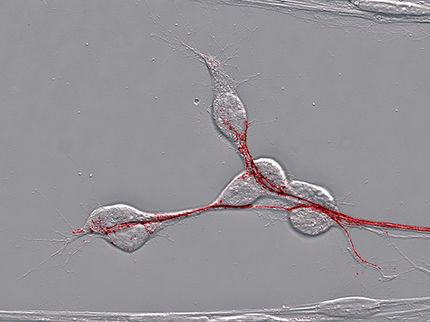Growing number of chemicals linked with brain disorders
Advertisement
Toxic chemicals may be triggering the recent increases in neurodevelopmental disabilities among children—such as autism, attention-deficit hyperactivity disorder, and dyslexia—according to a new study from Harvard School of Public Health (HSPH) and Icahn School of Medicine at Mount Sinai. The researchers say a new global prevention strategy to control the use of these substances is urgently needed.
The report will be published online in Lancet Neurology.
"The greatest concern is the large numbers of children who are affected by toxic damage to brain development in the absence of a formal diagnosis. They suffer reduced attention span, delayed development, and poor school performance. Industrial chemicals are now emerging as likely causes," said Philippe Grandjean, adjunct professor of environmental health at HSPH.
The report follows up on a similar review conducted by the authors in 2006 that identified five industrial chemicals as "developmental neurotoxicants," or chemicals that can cause brain deficits. The new study offers updated findings about those chemicals and adds information on six newly recognized ones, including manganese, fluoride, chlorpyrifos and DDT (pesticides), tetrachloroethylene (a solvent), and the polybrominated diphenyl ethers (flame retardants).
The study outlines possible links between these newly recognized neurotoxicants and negative health effects on children, including:
- Manganese is associated with diminished intellectual function and impaired motor skills
- Solvents are linked to hyperactivity and aggressive behavior
- Certain types of pesticides may cause cognitive delays
Grandjean and co-author Philip Landrigan, Dean for Global Health at Mount Sinai, also forecast that many more chemicals than the known dozen or so identified as neurotoxicants contribute to a "silent pandemic" of neurobehavioral deficits that is eroding intelligence, disrupting behaviors, and damaging societies. But controlling this pandemic is difficult because of a scarcity of data to guide prevention and the huge amount of proof needed for government regulation. "Very few chemicals have been regulated as a result of developmental neurotoxicity," they write.
The authors say it's crucial to control the use of these chemicals to protect children's brain development worldwide. They propose mandatory testing of industrial chemicals and the formation of a new international clearinghouse to evaluate industrial chemicals for potential developmental neurotoxicity.
"The problem is international in scope, and the solution must therefore also be international," said Grandjean. "We have the methods in place to test industrial chemicals for harmful effects on children's brain development—now is the time to make that testing mandatory."
























































